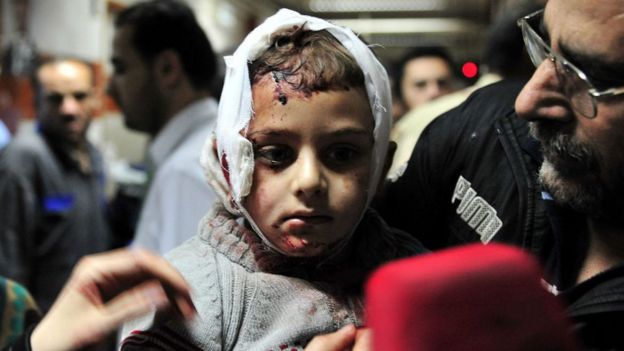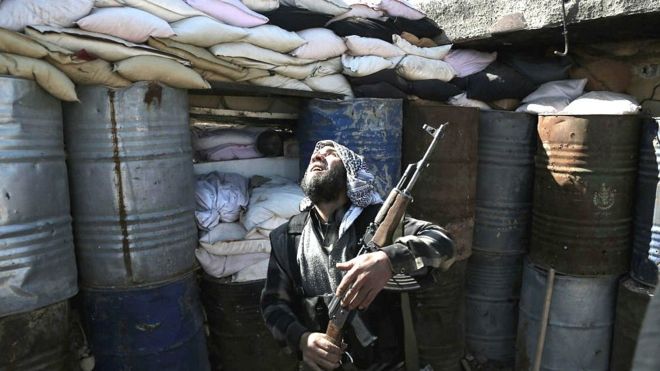The first major temporary truce in Syria’s five-year civil war has come into effect.
The “cessation of hostilities” began at midnight (22:00 GMT Friday) with early reports saying front lines were silent.
Some clashes between rebel groups and government forces have since been reported.
A special taskforce chaired by the United States and Russia will later meet in Geneva to monitor violations of the agreement.
The truce involves government and rebel forces, but not the so-called Islamic State group (IS) or the al-Qaeda-linked Nusra Front.
More than 250,000 Syrians have been killed in Syria’s civil war and millions more have been forced from their homes.
‘Halt to airstrikes’
In the run-up to the deadline, US President Barack Obama warned the Syrian government and its ally Russia “the world will be watching”.
Russia halted air strikes at midnight on armed groups that had said they would abide by the temporary truce, a senior Russian defence official told reporters at a briefing in Moscow.
Russian jets were reported to have intensified attacks on Syrian rebel positions on Friday.
A few hours after the deadline passed, a car bomb killed two people outside the government-held town of Salamiyeh, near Hama, Syrian state media reported. It is not clear who carried out the attack but the victims were reportedly soldiers.
The temporary halt in fighting appeared to be holding on Saturday morning, reported the BBC’s Mark Lowen from the Turkish town of Gaziantep, near the Syrian border.
- What’s the difference between ‘ceasefire’ and ‘cessation’?
- Syria truce: Who’s in and who’s out?
- Syria conflict at ‘hinge’ moment
- How Putin is succeeding in Syria
- Tide turns Assad’s way
Reuters news agency has since reported two claims from rebel groups of attacks from government forces.
A spokesman from the Jaish al-Islam group said two barrel bombs were dropped on its positions in the eastern Ghouta, near Damascus. The group said it also exchanged fire with government troops.
The First Coastal Division, part of the Free Syrian Army, has claimed three fighters from an affiliated group, the Second Coastal Division, were killed in a ground attack in Latakia province.
The claims could not be verified and the Syrian military is yet to comment.
UN special envoy for Syria Staffan de Mistura has said that peace talks will resume on 7 March if the truce “largely holds”, adding that he had no doubt there would be “no shortage of attempts to undermine this process”.
The cessation was brokered by the US and Russia, and is backed by a UN resolution. Previous talks in Geneva collapsed in early February after making no progress.
One of the key aims of the cessation is to allow desperately needed aid to reach people trapped in besieged areas.
The UN resolution names about 30 areas in dire need of aid, including eastern and western rural Aleppo and the eastern city of Deir al-Zour, which is under siege by IS.
Almost 100 rebel factions have agreed to respect the truce, the Syrian opposition umbrella group the High Negotiations Committee (HNC) says.
However, the HNC warned the Syrian government and its allies not to use the “proposed text to continue the hostile operations against the opposition factions under the excuse of fighting terrorism”.
 Image copyrightEPA
Image copyrightEPA
Russian President Vladimir Putin says his forces are targeting IS, Nusra Front and other extremist groups designated as legitimate targets by the UN Security Council.
However, over the course of its campaign in Syria, Russia has been widely accused of also attacking more moderate rebel groups fighting President Assad, an ally of the Kremlin.










